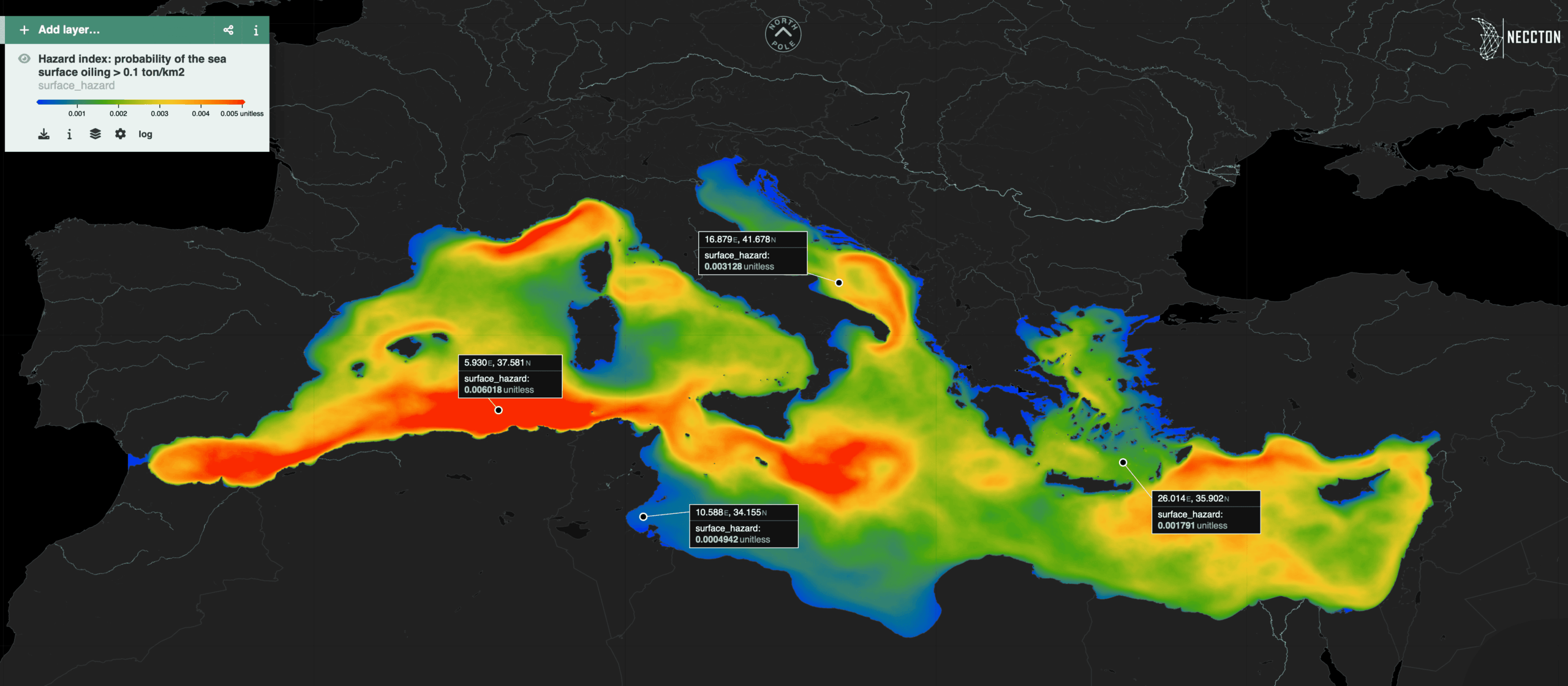
An international study, coordinated by CMCC with the involvement of the National Institute of Oceanography and Applied Geophysics (OGS), analyzes the fate and pathways of oil spills in the Mediterranean Sea.
The routes that oil slicks take in the Mediterranean, as a result of accidents at sea, are no longer a mystery. A new study, published in the journal Marine Pollution Bulletin, uses high-resolution numerical models to plot the trajectories and fate of oil slicks resulting from accidental spills.
The study uses marine circulation models to identify the most vulnerable areas of the Mediterranean basin. These areas include the Strait of Sicily, the northern Adriatic, and the eastern part of the basin as they are at the greatest risk of environmental impacts. The analysis considered various spill scenarios and took seasonal weather and sea conditions into account. The study provides useful tools for authorities to plan rapid, targeted interventions in case of an emergency.
“The question is not if there will be an oil spill in the Mediterranean, but rather, how severe the consequences will be,” says Svitlana Liubartseva, CMCC researcher and the study’s lead author. “Our research shows that, even without knowing when and where the next major oil spill will occur, we can predict which areas of the Mediterranean will be more or less affected. We can also inform relevant authorities about the time of arrival of the oil and the percentage that will be deposited on the beach so that they can develop damage mitigation strategies.”
The study offers a key contribution to the management and protection of environmental risks in the Mediterranean Sea, one of the most important and exposed marine areas to oil traffic, demonstrating that innovative, science-based approaches to understanding high-impact, low-probability anthropogenic disasters are critical for policymakers and local governments.
“The Mediterranean is a semi-enclosed sea densely trafficked by ships. It is rich in biodiversity and hosts many tourism-related activities. Therefore, even small spills can have lasting environmental and social impacts,” explains Donata Canu, an OGS researcher and co-author of the study. “Thanks to advanced modeling, we can now more accurately predict where and how oil will disperse, helping authorities take more effective action to protect fragile ecosystems and vulnerable coastlines.”

Visualization of the sea surface hazard indices with the Lobelia GUI. Credits: NECCTON Project: https://neccton.eu
The research was conducted as part of the NECCTON project, which is funded by the European Commission’s Horizon Europe RIA program, with the aim of developing new Copernicus products that include information on pollutants, environmental pressures, and the distribution of species that contribute to biodiversity or the economies of the sea.
The study uses extensive Monte Carlo simulations based on the MEDSLIK-II physical model to analyze oil spill behavior throughout the Mediterranean Sea for the first time, as well as leveraging high-performance computing technologies and the most up-to-date database on real oil spill observations, which made the large-scale simulations possible. CMCC contributed more than a decade of experience applying MEDSLIK-II, advanced scientific expertise, and high-level computational resources to this complex challenge.
OGS has extensive experience developing numerical models related to environmental risk, thanks to projects such as ASAP (funded by the Interreg IPA ADRION 2021-2027 program) and NAMIRS (funded by the European Commission’s Directorate-General for European Civil Protection and Humanitarian Aid Operations, or DG ECHO).


